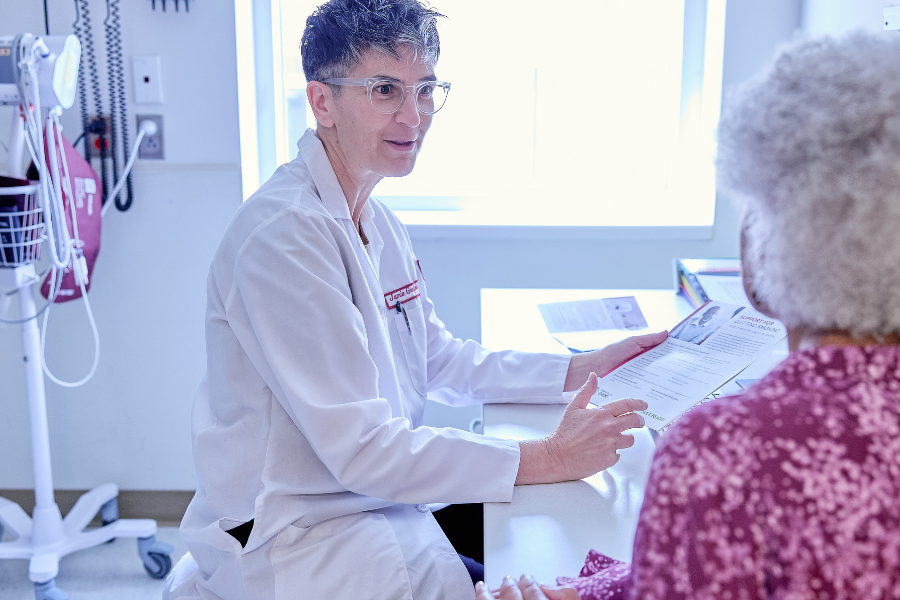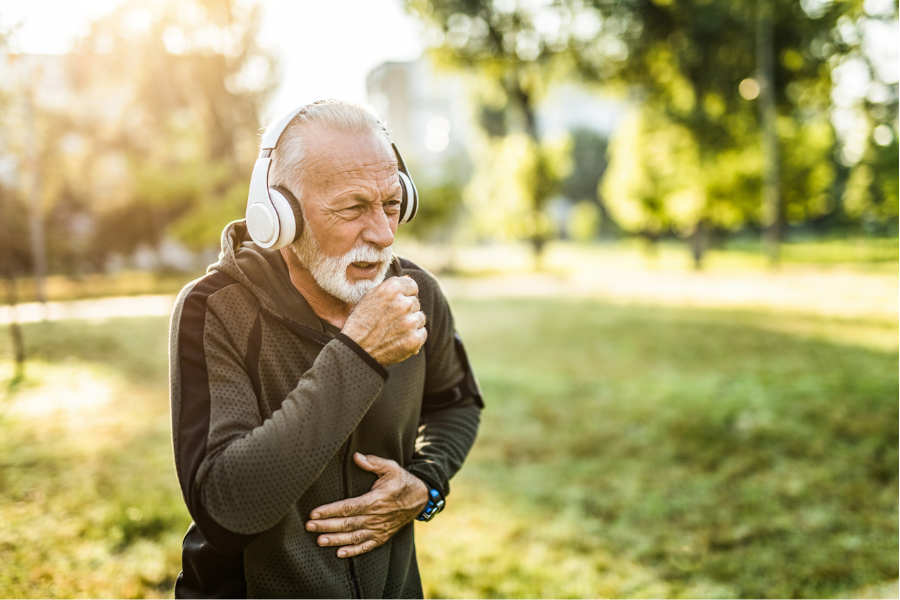Social or physical distancing is important for everyone, but for people with chronic lung disease, it’s essential. With the threat of coronavirus (COVID-19), people who attend pulmonary rehab may have been asked to stay at home to prevent the risk of face-to-face transmission. But with self-care techniques and exercises, you can still reap the benefits of pulmonary rehab from the comfort of your home.
5 Pulmonary Rehab Tips You Can Do at Home
View All Blog PostsPractice These Self-Care Techniques and Exercises
Belly Breathing
Diaphragmatic breathing, or breathing from your belly, helps you take in more air with less effort. Research suggests that it also calms your stress response, helping you overcome anxiety — something you may be experiencing during the COVID-19 pandemic. To practice belly breathing, try the following 2–4 times a day:
- Lie comfortably on your back or sit straight and supported on a chair.
- Place one hand on your chest, and one hand on your belly.
- Breathe in slowly through your nose. Your belly should push out, while your chest stays flat.
- Breathe in for a count of 2, and breathe out for a count of 4. This helps slow down your nervous system and gives you control over your breath.
As you get more comfortable with this breathing method, try it while you’re engaged in activities such as walking upstairs, cleaning the kitchen or watching TV. You can also practice belly breathing while meditating, doing yoga or practicing tai chi.
Stretching Exercises
Stiff joints and achy muscles can make moving difficult. Stretching exercises help you increase flexibility and improve balance and posture. As your posture improves, you naturally breathe better. Gently exhale, then start with the following:
Just Say No
Head tilts take your focus within and make you more aware of where you’re holding tension. By slowly and purposefully nodding down, then side-to-side, you relax your face, neck and shoulders. Here’s how:
- Sit comfortably with your shoulders back. Breathe in slowly and deeply.
- Lower your chin while breathing out.
- Breathe in, while slowly moving your head back to neutral.
- Nod your head from side to side, moving gently and naturally with your breath.
- Return to neutral and start again.
Do the Shoulder Roll
After you’ve finished your head tilts, try shoulder rolls. Stand with your hands dangling naturally at your sides. Breathe in and then slowly roll your shoulders forward. Relax. Breathe in again and slowly roll your shoulders back. Relax and repeat as long as it feels good.
How to Stay Motivated and Focused
With social distancing, you’re probably already off schedule. Don’t worry. There’s no set time to exercise. In fact, you may be more likely to get your daily dose in if you set small goals and incorporate exercises into your day. Try these:
- A good yawn and stretching session before you get out of bed may set your day off right.
- Stretch your legs and arms while you binge the latest on Netflix, Facebook Watch or Hulu.
- Do your exercises with family members. Have everyone in your family track their exercise minutes throughout the day.
- Reward yourselves for reaching your exercise goals: Download a book you’ve wanted to read, bake a special treat for your family or watch a special movie together.
Follow Your Guidelines
Be sure to follow the guidelines outlined by your pulmonary rehab team and watch for overexertion. In general:
- Drink water throughout the day and keep yourself hydrated.
- Pace yourself, avoid pushing too hard.
- Keep your rescue inhaler with you and use it if you need it.
When You’re Short of Breath
Shortness of breath is okay as long as you still have control of your breathing. But if it continues, stop and take a break. If any of the following occur, stop exercising and call your pulmonary rehab team:
- Increasing shortness of breath
- Chest pain or discomfort
- Burning, tightness, heaviness in your chest
- Unusual aching in your back, jaw, arms, shoulders, neck or joints
- Feeling very tired
- Dizziness or nausea
As always, be sure to talk with your Temple Pulmonary Rehab team before starting any new at-home exercise program. And let us know how it’s going along the way.
During this unusual time, it’s important that we stick together. We’re here to help guide you through.

